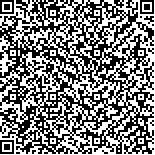田巍巍,朱敏,张跃,等.Hammersmith婴儿神经学检查在高危儿粗大运动发育随访中的应用研究[J].中华物理医学与康复杂志,2022,44(9):795-799
扫码阅读全文

|
| Hammersmith婴儿神经学检查在高危儿粗大运动发育随访中的应用研究 |
|
| |
| DOI:10.3760/cma.j.issn.0254-1424.2022.09.007 |
| 中文关键词: 高危儿 Hammersmith婴儿神经学检查 Gesell发育诊断量表 粗大运动 预测效度 |
| 英文关键词: High-risk infants Hammersmith Infant Neurological Examination Gesell developmental schedule Gross movement Predictive validity |
| 基金项目:国家自然科学基金青年基金(81401864);江苏省科教强卫青年人才(QNRC2016089);江苏省妇幼保健协会科研项目(FYX201907);南京市卫健委一般性课题(YKK19108) |
|
| 摘要点击次数: 4246 |
| 全文下载次数: 5601 |
| 中文摘要: |
| 目的 探讨Hammersmith婴儿神经学检查(HINE)对高危儿粗大运动发育结局的预测效度。 方法 选取在矫正3、6、9、12月龄均完成HINE和Gesell发育诊断量表(GDS)评估的高危儿207例,根据矫正12月龄时其粗大运动发育结局将其分为发育正常组和发育迟缓组,以2组患儿各随访月龄HINE总分差异确定区分效度;计算各随访月龄HINE总分与GDS粗大运动发育商的Spearman系数(rs),并分析二者的同时效度;通过受试者工作特征曲线(ROC)确定各随访月龄HINE预测矫正12月龄时粗大运动发育迟缓的总分临界值,计算曲线下面积(AUC)、敏感度、特异度以评价其预测效度。 结果 各随访月龄粗大运动发育迟缓组HINE总分均低于发育正常组水平,组间差异均具有统计学意义(P<0.001)。HINE总分与GDS粗大运动发育商的同时效度在矫正6月龄时最高,9、12月龄时次之,3月龄时相对最低(rs值分别为0.751、0.681、0.680、0.549,P<0.001)。HINE预测矫正12月龄时粗大运动发育迟缓的总分临界值分别为60、67、71、71分;AUC分别为0.884、0.924、0.897、0.905;敏感度分别为0.932、0.886、0.773、0.659;特异度分别为0.712、0.841、0.822、0.920(P<0.001)。 结论 HINE对高危儿出生后第1年粗大运动发育迟缓具有良好的预测价值;其总分临界值可作为高危儿神经运动发育结局的辅助诊断参考。 |
| 英文摘要: |
| Objective To explore the ability of the Hammersmith Infant Neurological Examination (HINE) to predict the gross motor development of high-risk infants. Methods A total of 207 high-risk infants were assessed with the HINE and the Gesell Developmental Schedule (GDS) at the ages of 3, 6, 9 and 12 months. They were then divided into a normal development group and a delayed group according to their gross motor development at 12 months old. The validity of the HINE′s discrimination was quantified retrospectively as the difference in the total HINE score at each follow-up month between the two groups. Spearman coefficients relating the total HINE score with the gross motor development quotient from the GDS were calculated at each follow-up month. The HINE′s total score threshold for predicting gross motor retardation at 12 months was determined from a receiver operating characteristics curve, and the predictive validity, sensitivity and specificity were evaluated by calculating the area under the curve. Results At each time point the average total HINE score of the delayed group was significantly lower than the normal group′s average. The correlation between the HINE total scores and the GDS gross motor development quotients was strongest at 6 months old, and weakest at 3 months. The threshold total HINE score for predicting gross motor retardation at 12 months old was 60 at 3 months, 67 at 6 months, and then 71. The instrument′s sensitivity and specificity were very good at all four time points. Conclusion The HINE can usefully predict gross motor retardation in the first year of life for high-risk infants. The critical value of the total score can be used as an auxiliary diagnostic reference for neuromotor development in such infants. |
|
查看全文
查看/发表评论 下载PDF阅读器 |
| 关闭 |